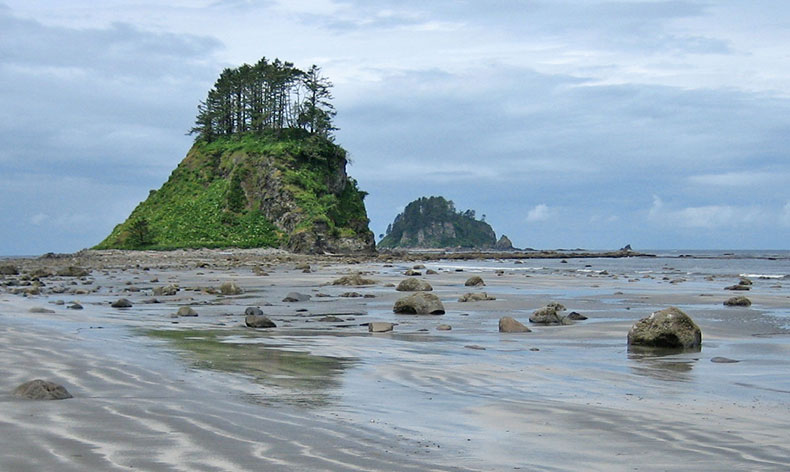
Summary and Findings
Olympic Coast National Marine Sanctuary represents one of North America's most productive marine ecosystems that lies adjacent to expansive stretches of spectacular undeveloped shoreline. The sanctuary encompasses a variety of habitat types, from sand beaches and rocky intertidal shores to nearshore kelp forests and uninhabited islands, to deep coral and sponge communities and submarine canyons. The sanctuary's temperate location and complex physical environment maintain critical habitats for unique communities of organisms. Twenty-nine species of marine mammals and more than 100 seabird species enrich the system, while fishes occupy a myriad of niches from deep ocean canyons to shallow tide pools. A long history of human interaction with the marine environment is a unique facet of the area's legacy. Native American cultures have lived for millennia in an intimate relationship with the ocean, and beginning in the 16th century, European exploration and settlement made a significant impact on the Olympic Coast.
The overall resources protected by the sanctuary appear to be in good to fair condition. Water quality parameters in the sanctuary appear to be in good condition, which may reflect its isolation from major urban or industrial complexes. There are indications of habitat quality degradation of hard bottom and deep sea biogenic structures that are primarily a result of several decades of bottom contact fishing gear use; however, management decisions have been enacted recently to help reduce this pressure. Living resource conditions have followed trends similar to those of habitats with many seabird, marine mammal and fish population structures significantly altered with respect to historical values. Some uncertainty surrounds our scientific understanding of fishery resources and current levels of exploitation with regards to new initiatives for ecologically based fisheries management that address sustainability of targeted fisheries, as well as marine ecosystem function. Beyond severe natural forces, the principal threats to maritime archaeological resources in the sanctuary come from unauthorized salvage and contact by fishing gear. This condition report will serve as background and supporting material for the review of Olympic Coast National Marine Sanctuary's management plan, which will enable us to better understand, protect and utilize the nation's marine environment.

